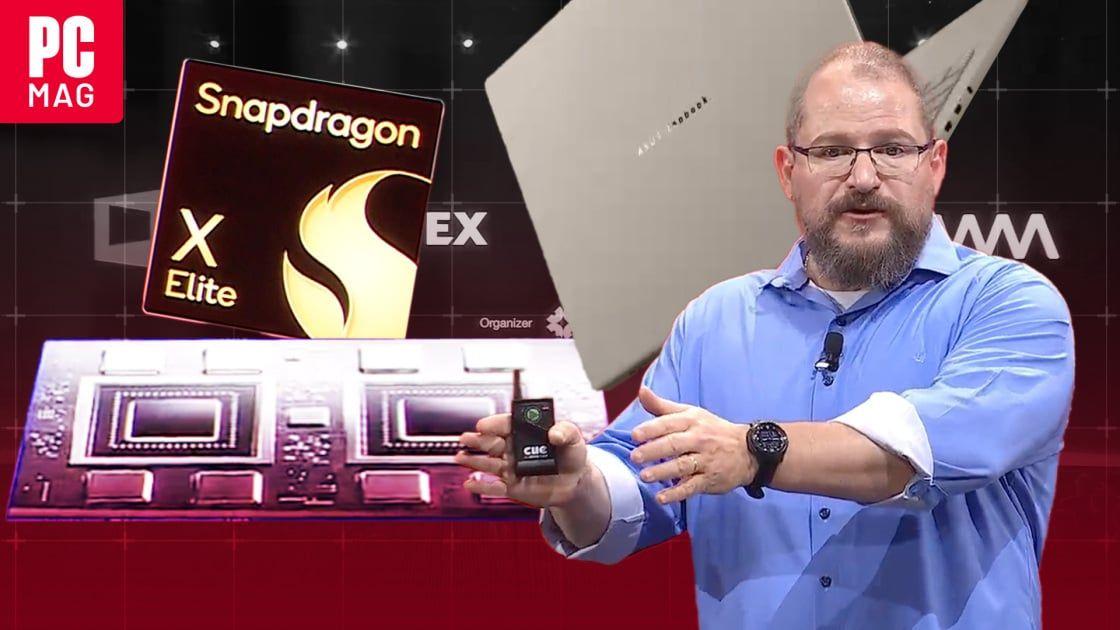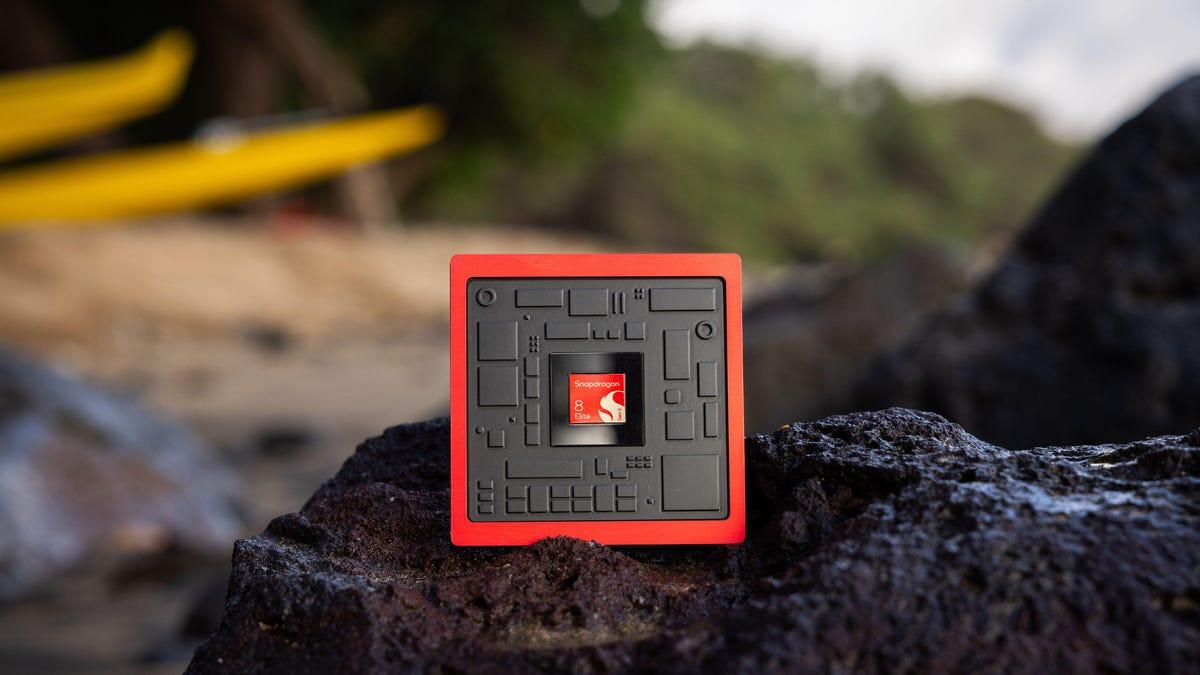Qualcomm Unveils 6G Plans and AI-Centric Future at Snapdragon Summit
2 Sources
2 Sources
[1]
Qualcomm drops 6G and ChromeOS bombshells in keynote
Disclosures of two key initiatives provided some unexpected bombast to Qualcomm CEO Cristiano Amon's vision of an AI future. Qualcomm chief executive Cristiano Amon promised a "new phase of Snapdragon," bringing, in his words, "AI everywhere." One key technology: the next-gen "6G" technology, which will be ready in 2028. Google's Rick Osterloh, senior director of devices and services, also indicated that his company was building a common technical foundation for PCs, apparently referencing an initiative to merge ChromeOS and Android. Qualcomm is celebrating ten years of the Snapdragon Summit here in Maui, the company's promotional conference where it presents its roadmap to customers, developers, and fans. In 2024, Qualcomm set out to show how AI could be personalized through innovations like multimodal assistance and running large local models on the device. In 2025, Qualcomm will show you how it scales, Amon said. The approach isn't new; many technology companies have talked about tapping computing where it lives, both in the cloud and on the edge. Amon said that same approach will be applied to AI, so that handhelds, computers, and servers will all work together. "AI is the new UI," Amon said, putting AI where the user is. Qualcomm, which has predicted its success on its Snapdragon chips for smartphones, said that it's expanding beyond smartphones with AI as well as silicon. Devices like a smartwatch are just extensions of the smartphone, Amon said. As AI takes over the phone, those devices will begin to interact with the phone's AI, he said. It's not a great exaggeration to say that those devices could be considered agents that will work with the smartphone on specific functions. Amon called that an "ecosystem of you." Apps that run those devices, like glasses, will continue to evolve, Amon said. Simple applications like calendar or contacts, banking or bills, will be managed by AI. If there is a conflict, for example, the AI will resolve it. As AI technology evolves, Amon said that he sees the models evolving as well, into a collection of tiered models at the edge, designed to allocate tasks efficiently. The cloud will ingest the data and train the model, but it will be the edge that fine-tunes its training data and then applies the model to the user's needs. "The amount of data will dwarf the amount of data that will train the models," Amon said. "So that is going to be massive." Those models and data will need to be communicated, and Qualcomm's work in "6G" -- the evolution of 5G -- is going to assume that the network itself will intelligently communicate that data. Amon said that Qualcomm will have 6G "pre-commercial devices" as early as 2028. Qualcomm's scenario assumes that you'll be using a device like a smart ring or smart glasses that will recognize people, track steps, and be controllable using gestures, voice, or other means. If there's a free moment, the AI will ask for your input on critical decisions. And that will carry over to your car, where the car's computing platform will serve as a supplement for the computing horsepower already on your phones. Rick Osterloh, senior vice president of devices and services at Google, joined Amon on stage. In a talk that touched upon the first Android phones and other milestones in the two companies' relationship, Osterloh referred to a "common technical foundation for PCs and desktop computing systems." "In the past, we've always had very different systems between what we're building in PCs and what we're building in smartphones, and we're working to combine that," Osterloh said. "And I think that this is another way that we can leverage all of the great work we've been doing together on our AI stack...bring Gemini models, bringing our assistant, bringing all of our application and developer community into the PC domain." Osterloh's comments appear to refer back to and confirm earlier reports by Android Authority and others, which have reported that Google appears to be rewriting Chrome OS, the operating system for Chromebooks, and integrating it with Android. That effort is being referred to as "Project Aluminium," a source said. "We're really excited about this," Osterloh added. "And I think that this is another way in which Android is going to be able to serve everyone in every computing category." Amon appeared to imply that the two companies were working together on the project.
[2]
Qualcomm to introduce 6G devices by 2028, aims to bring AI everywhere
The other big theme of Amon's keynote was Artificial Intelligence. At the Snapdragon Summit in Maui, Qualcomm has made it clear that 6G technology will rollout sooner than you may think. Taking the stage on the very first day of the Summit, Qualcomm CEO Cristiano Amon announce that the company will begin testing the 6G tech in 2028 with pre-commercial devices. He was also quick to remind that Qualcomm had launched 5G In 2018, two years before the initial rollout plan for 2020. The other big theme of Amon's keynote was Artificial Intelligence. He said that a new phase of Snapdragon will build around bringing AI everywhere. "We are going to bring AI everywhere, leading the next generation of innovation," he said, while adding that AI will soon become the new user interface for devices. This is the 10th edition of the Snapdragon Summit where the company unveiled its new platforms for mobile and computing: Snapdragon 8 Elite Gen 5 and Snapdragon X2 Elite. Both platforms bring improved performance, better efficiency while focusing heavily on AI capabilities. Also read: Qualcomm introduces Snapdragon X2 Elite and X2 Elite Extreme putting Intel and AMD on alert Amon explained that AI will not remain confined to smartphones but will expand across PCs, wearables and other connected devices. He described a world where each device functions as an intelligent "agent," working in sync with a user's smartphone to manage tasks which may range from scheduling conflicts to financial reminders. This approach builds on themes Qualcomm highlighted at last year's summit, where the focus was on personalised AI assistants and on-device large language models. Amon said that the emphasis will now shift toward scaling those capabilities, combining cloud resources with edge processing to ensure AI can act in real time while safeguarding user data. " According to Amon, AI models themselves will also evolve. Instead of relying solely on centralised cloud training, Qualcomm envisions a tiered system of edge-based models that can refine and apply insights locally while still benefiting from large-scale training in the cloud. That approach, he argued, will be necessary to handle the massive volumes of user data expected in the years ahead. The Summit also saw appearances from Qualcomm's partners, including Shantanu Narayen of Adobe and Rick Osterloh of Google. Narayen said that Adobe is working closely with Qualcomm to create more personalised experiences for creators. "I am very excited about how people will take different Qualcomm powered devices and use them for creativity. We are working to create a firefly model that is personalised. So, people can create things in their own style. That kind of power was not available earlier. Qualcomm will allow and empower us to do that," he said. Narayen believes that this will empower more creators. Meanwhile, Rick said that Google and Qualcomm are working together to reduce the longstanding gap between smartphone and computer operating systems. "In the past, we've had very different systems between what we're building in PCs and what we're building in smartphones," he noted. "We're working to combine that... bringing Gemini models, our assistant, and the entire app and developer community into the PC domain."
Share
Share
Copy Link
Qualcomm CEO Cristiano Amon announces plans for 6G technology by 2028 and emphasizes AI integration across devices. Google hints at merging ChromeOS and Android for a unified computing experience.

Qualcomm's Vision for 6G and AI Integration
At the 10th annual Snapdragon Summit in Maui, Qualcomm CEO Cristiano Amon unveiled ambitious plans for the future of technology, focusing on 6G development and widespread AI integration. Amon announced that Qualcomm aims to have 6G "pre-commercial devices" ready as early as 2028, showcasing the company's commitment to pushing the boundaries of wireless communication
1
.AI as the New User Interface
Amon emphasized that AI will become "the new UI," promising to "bring AI everywhere" as part of a "new phase of Snapdragon"
2
. This vision extends beyond smartphones to encompass PCs, wearables, and other connected devices. Qualcomm envisions an ecosystem where each device functions as an intelligent "agent," working in sync with a user's smartphone to manage tasks ranging from scheduling conflicts to financial reminders1
.Evolution of AI Models and Edge Computing
Qualcomm's approach to AI involves a tiered system of edge-based models that can refine and apply insights locally while still benefiting from large-scale training in the cloud. This strategy aims to handle the massive volumes of user data expected in the coming years efficiently. Amon stated, "The amount of data will dwarf the amount of data that will train the models. So that is going to be massive"
1
.Google's Unified Computing Vision
Rick Osterloh, Google's senior vice president of devices and services, hinted at a significant development in the PC and mobile computing landscape. He revealed that Google is working on creating a "common technical foundation for PCs and desktop computing systems," suggesting a merger between ChromeOS and Android
1
2
.Related Stories
Partnerships and Industry Collaboration
The Snapdragon Summit also highlighted Qualcomm's collaborations with industry leaders. Adobe's CEO, Shantanu Narayen, discussed their partnership with Qualcomm to create more personalized experiences for creators, including the development of a personalized Firefly model
2
.Qualcomm's Expanding Focus
While Qualcomm has traditionally been known for its Snapdragon chips in smartphones, the company is now expanding its focus. Amon emphasized that Qualcomm is moving beyond smartphones with AI and silicon, envisioning a future where devices like smartwatches and smart glasses interact seamlessly with a phone's AI
1
.References
Summarized by
Navi
Related Stories
Qualcomm and MediaTek Lead the Charge Towards 6G: AI Integration and Technological Advancements
27 Feb 2025•Technology

Qualcomm's Computex 2025 Keynote: AI-Powered PCs and Future Chip Announcements
20 May 2025•Technology

Qualcomm's Snapdragon 8 Elite Gen 5: Powering Next-Gen Android Phones with Advanced AI and Performance
24 Sept 2025•Technology

Recent Highlights
1
Google launches Gemini 3 Flash as default AI model, delivering speed with Pro-grade reasoning
Technology

2
OpenAI launches GPT Image 1.5 as AI image generator war with Google intensifies
Technology

3
OpenAI launches ChatGPT app store, opening doors for third-party developers to build AI-powered apps
Technology





